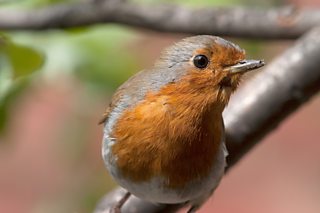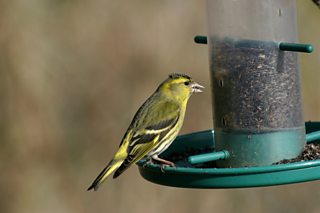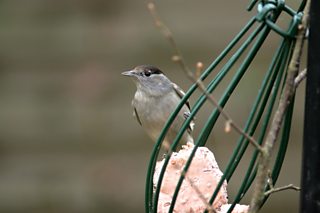Claire Boothby, BTO’s Garden BirdWatch Development Officer, discusses how feeding birds can aid their survival and influence evolution.

漏D Waistell
After the autumn lull, when birds disperse to the wider countryside where there are plentiful natural food supplies, birds flock back to gardens as the weather turns colder in winter. Results collected by volunteers taking part in our weekly survey show that for many resident species, including the charismatic Robin, winter is the peak time of year to see birds in gardens.

漏John Harding
However, the number of birds we see in gardens is usually a product of how much food can be found in the countryside. We know for example that numbers of coming into gardens each winter can be variable and is dependent on the natural resources of Sitka Spruce seeds. In years of a poor seed crop, Siskins are more abundant in gardens, particularly ones offering niger and sunflower hearts.

漏Sarah Kelman
Research has shown that providing food can aid the survival of birds overwinter. Birds can expend a lot of energy in the cold weather and it is crucial they eat enough to meet these energetic demands. We know that for example, which weigh approximately 11 g, need to consume about 1 kcal per gram of body weight each day during the winter. This is the equivalent of eating around 300 small insects, weighing around 10 g in total. Gardens can provide a haven for wild birds in winter, offering food in feeders or on bird tables and the berries or seed heads left on garden plants. However, bird feeders, tables and birds baths should be cleaned regularly to reduce the chances of disease transmission.

漏Mark R Taylor
Not only can providing food for birds aid their survival but it has also been found to in the case of the Blackcap. Historically Blackcaps were only seen in the UK during the summer, however over the last 60 years birds breeding in central Europe have started to show a new winter strategy, travelling northwest towards the UK for the winter. BTO Research Ecologist Kate Plummer found that here in the UK there is a growing association between which gardens Blackcaps are found in during the winter and the provisioning of food, particularly fats and sunflower hearts. Surprisingly, in a relatively short period of time, Blackcaps that over-winter in the UK have evolved a different shaped beak, compared to those over-wintering in their traditional winter range of southern Spain. This difference is thought to be driven by the specialisation of the Blackcaps to feeding on seeds in gardens.
The next time you’re outside filling up the feeders, remember that this action can influence behaviour, survival and the distribution of wild birds.
